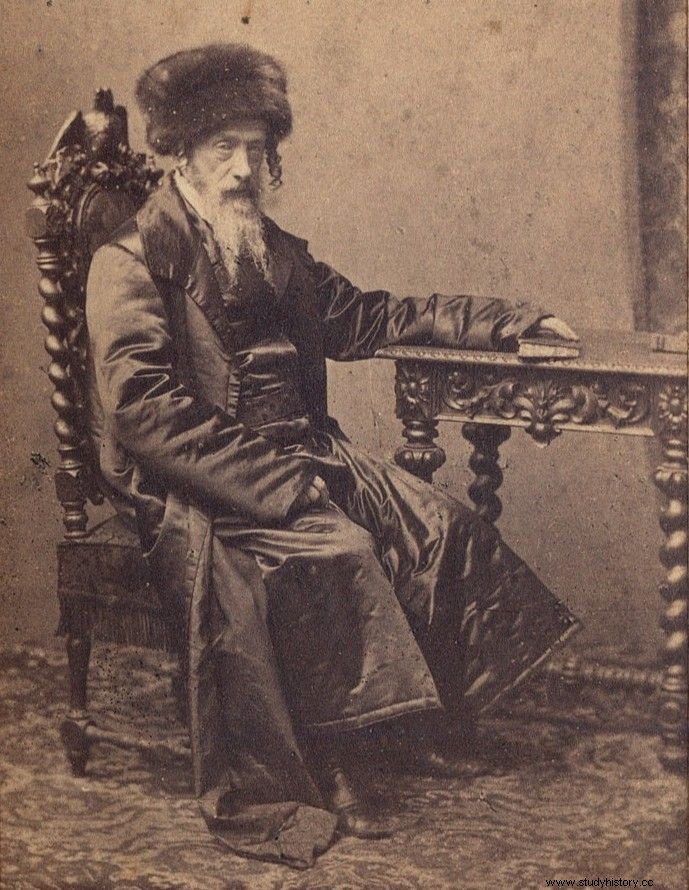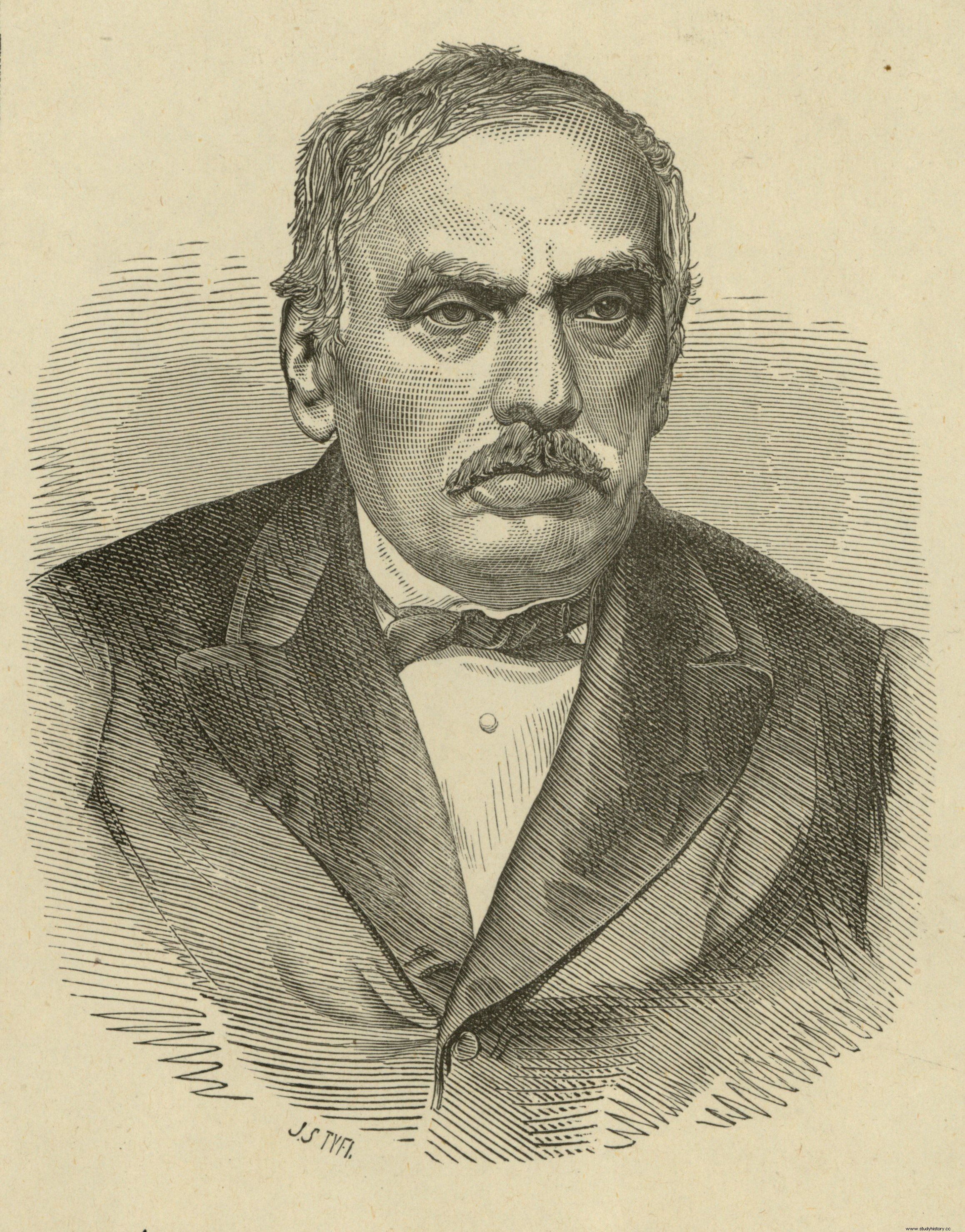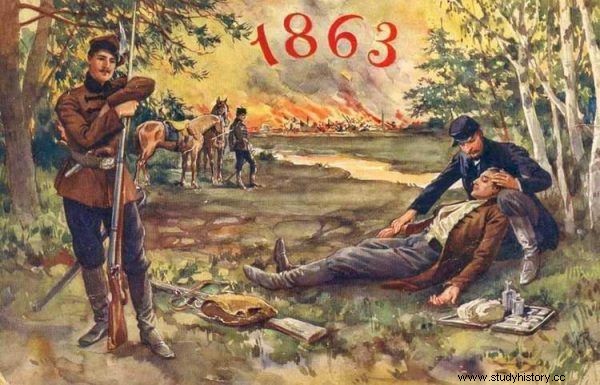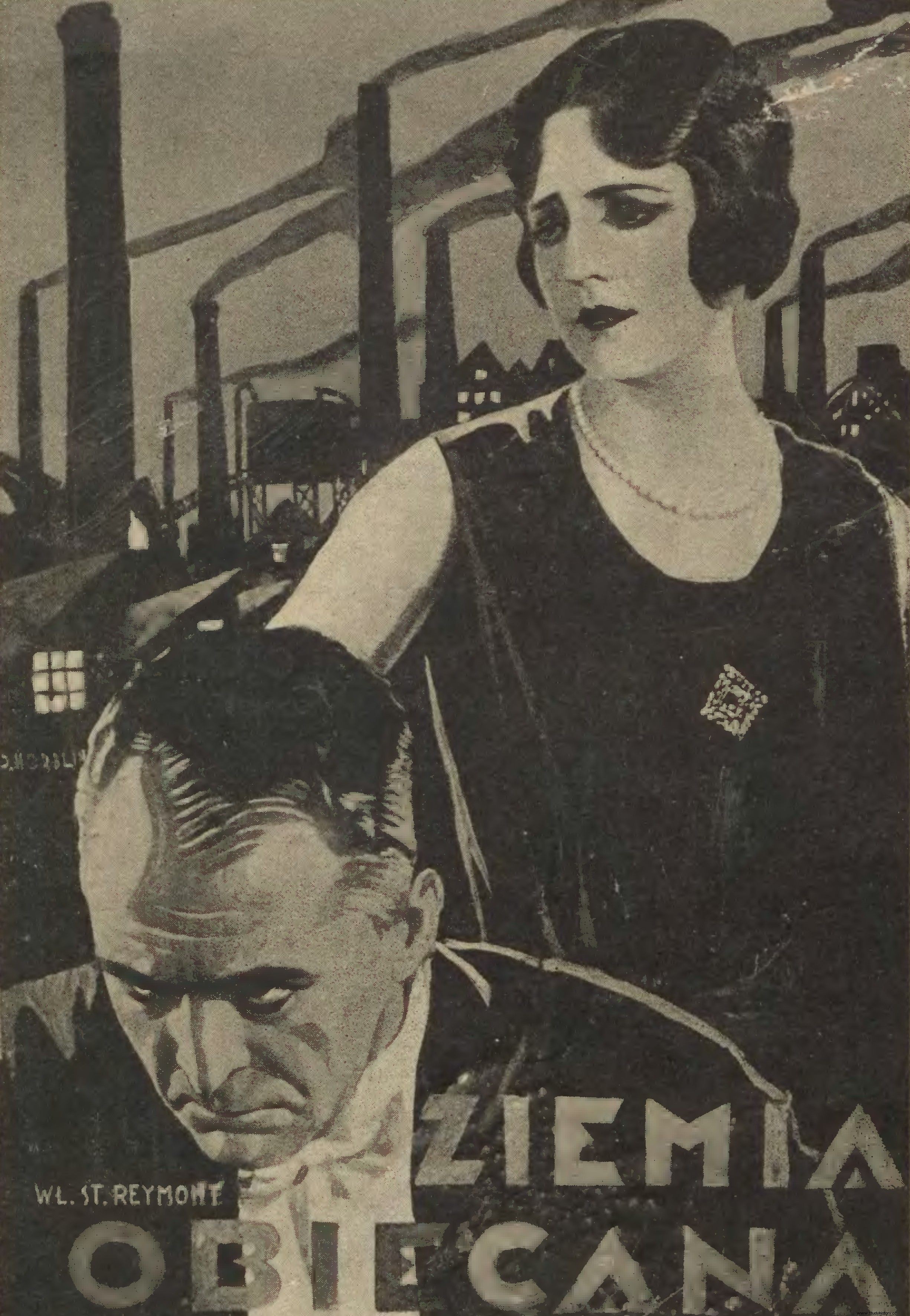Passengers, traitors, petty crooks? The Internet is full of stories about Jews digging holes in Poland. We will tell you about completely different heroes. About seven wonderful, thanks to which the Republic of Poland became a better country. It's time to recognize their merits.
Dow Ber Meisels. Together against tsarism
Before he even became a rabbi in Kraków, he participated in supplying weapons to the November insurgents . He took part in the Krakow Uprising personally. Not only did he openly postulate the equality of Jews, but also called on them to support Polish independence aspirations .
He not only declared his solidarity with Poles, but also demonstrated it. When the Cossacks desecrated Warsaw's churches and the clergy decided to close them, Meisels - already as the Assistant Rabbi of Warsaw - also ordered the synagogues to be closed.

Rabbi Dow Ber Meisels was a true Polish patriot (photo:Karol Beyer; source:public domain).
The tsarist authorities already had an eye on Meisels after representatives of the Jewish community joined the funeral of the so-called five fallen (victims of the suppression of a student demonstration by the army in 1861) and the celebration turned into a great demonstration against tsarism. Immediately after the outbreak of the January Uprising, he was forced to leave the Kingdom.
When Rabbi Meisels died in 1878, his funeral was an occasion to demonstrate Polish-Jewish solidarity in resistance against the invader.
Szymon Askenazy. Historian, biographer, diplomat
In the gallery of his ancestors there was, among others, the famous Talmudist Khacham Tzvi, but Szymon Askenazy - despite being brought up in an orthodox religious family - was educated in secularism. Due to his origin, however, he could not develop his career in Warsaw and had to go to Lviv.

Professor Szymon Askenazy (first from the right) in the photo taken during the awarding of the prize of the Capital City of Warsaw, 1934 (source:public domain).
There he earned the title of one of the greatest Polish historians of his time - it was even said about the historical school of Ascenazy. He dealt with the history of Poland in the 18th and 19th centuries, setting it in a wider international context.
He wrote, among others, biographies of Prince Józef Poniatowski and the independence activist Walerian Łukasiński. He argued bitterly with the so-called Krakow school. He raised a whole generation of historians.
During the Great War, he found himself in Switzerland and from there he conducted activities for the benefit of Poles, including , together with Henryk Sienkiewicz, the Committee for Aid for War Victims in Poland .
After regaining independence, he was the representative of Poland to the League of Nations, he supported the cause of "Polish Gdańsk" with half success, and lost his position due to protests by the National Democrats . He never managed to take a professorship at the University of Warsaw - he was denied it because of protests from other scientists and he was only allowed to lecture at the university until his death.
Samuel Orgelbrand. Encyclopedia and Talmud
He is perhaps the most important of all Jewish publishers who contributed to the development of Polish culture in the 19th century. He started out as a bookseller and minor publisher, then bought a small printing house, which he later expanded and modernized.

Samuel Orgelbrand. It is to him that we owe the first Polish multi-volume encyclopedia (author:Jan Styfi; source:public domain).
Two decades later was the first in Poland to introduce a steam-powered printing press . He was already employing about two hundred people in his printing facilities, and fonts from his foundries were bought all over the Kingdom.
Orgelbrand published not only Fredro, Słowacki and Józef Ignacy Kraszewski (thirty works of the latter), but also supported poor Polish writers. He has published over five hundred publications in Polish, and about a hundred in Hebrew.
His greatest publishing undertaking, however, was the first Polish multi-volume encyclopedia . Over one hundred and eighty Polish scientists were involved in its creation. It was written in the years 1859-68 and was published in the form of notebooks.

Even the outbreak of the January Uprising did not stop Samuel Orgelbrand from carrying out his great work (source:public domain).
The difficulties were caused not only by the scale of the challenge, but also by the historical moment:the January Uprising broke out, the number of subscribers decreased and the costs increased. Orgelbrand had to reduce the circulation several times, but contributed a lot to the "Universal Encyclopedia" . It was said that it could have been completed because the "Babylonian Talmud", which the entrepreneur had published in parallel, was selling very well.
After Orgelbrand's death, the "Encyclopedia" was re-issued. For a time it was one of the main sources of income for the company that his sons took over.
Abraham Stern. A machine that counts
He became interested in mechanics as an apprentice at a watchmaker in Hrubieszów. There, the famous activist of the Enlightenment Stanisław Staszic saw his talent and, as a patron, opened the door to Stern to study in Warsaw.
Stern adhered to the principle that man should create machines and manage them, and they should do the strenuous work for him . In 1812 he constructed and presented to the Society of the Friends of Sciences a calculating machine which he later refined.
Of course, similar attempts were made in the West (Wilhelm Schickard's, Pascalin's or the so-called Leibniz's calculator), but these were impractical and prone to faults.
Stern's invention was characterized by the necessary simplicity. Unfortunately, the project was lost - no one was ready to undertake mass production. Only the author's description remained, and the original device was destroyed during World War II.

Abraham Stern on an etching by Jan Feliks Piwarski (source:public domain).
Stern also designed a mechanical thresher or reaper - devices that under the conditions of that time could revolutionize local agriculture. Only that the creator was ahead of the era in the literal sense: it was still more profitable to use serfdom than mass production of devices that would help people in farming.
The inventor did not live to see the abolition of serfdom. The counting machine (arithmometer) was successfully put into mass production by the French Charles Thomas. Stern has been somewhat forgotten. It is worth remembering that was the first Jew to join the Polish Society of the Friends of Sciences.
Aleksander Hertz. Cinematography Sphinx
At the beginning of the 20th century, he was sent to exile because he was caught helping in hiding PPS activists with whom he sympathized - including Józef Piłsudski. The tsarist authorities allowed him to return to the country, but not to the profession (he was a banking worker). This was how Hertz got involved with cinematography.

Aleksander Hertz (left) came to Siberia at the beginning of the 20th century for helping the socialists. Among them was also Józef Piłsudski (source:public domain).
In 1909 he co-founded the "Sfinks" Share Society. It started with the opening of a cinematograph on Marszałkowska Street, then started producing documentaries, and finally set up its own production company, which allowed for the production of feature films.
It was in the "Sfinks" studio that "Meir Ezofowicz" (based on the novel by Eliza Orzeszkowa) and the first screening of "Deluge" were created (1913). Hertz's discoveries were future movie stars:17-year-old Apolonia Chałupiec (Pola Negri) or Aleksandra Gudowicz (later known as Lia Mara) .
This article has more than one page. Please select another one below to continue reading.Attention! You are not on the first page of the article. If you want to read from the beginning click here.
After the ownership changes in "Sphinx", Hertz became its only "face". Already during the Second Polish Republic, he signed several films with a star cast, well received by the audience. Every third of the more than one hundred and seventy films he has produced, he directed himself. He was a magnate of the then Polish film industry and at the same time quite a typical representative of it - Jews constituted a significant group in this milieu.

The last film directed by Hertz was "The Promised Land" (source:public domain).
By the way:Hertz was born in the same year and in the same city as Samuel Goldwyn, who later founded the famous MGM studio.
Hipolit Wawelberg. Multiply to divide
He was one of the most important - next to successive members of the Epstein dynasty or Leopold Kronenberg - nineteenth-century Warsaw financiers, but he believed that fortune was not everything.
At nineteen, he was eager to take part in the January Uprising , but his father - the owner of a large bank at that time - planned his son's career. When Hippolytus finished his studies and went to the branch of the company in St. Petersburg, he turned out to be able not only to multiply resources, but also to divide them.

Hipolit Wawelberg was able to share his wealth (source:public domain).
He set up a cheap canteen for the poorest students, who came to St. Petersburg and created a scholarship fund for them. In Vilnius, he organized kitchens for the poor. Then, in Warsaw, participated in financing, for example, the construction of a monument to Adam Mickiewicz or printing great works of Polish literature. He was also the founder of a children's hospital and a colony for children from poor families.
Hipolit Wawelberg with his brother-in-law Stanisław Rotwand (lawyer, banker and philanthropist) also financed two museums and created the Mechanical and Technical School from scratch (1895). In addition, they paid tuition fees for nearly half of her students. The school, under various names, survived until it was incorporated into the Warsaw University of Technology in 1951, but in the interwar period its graduates - mechanics, electricians, engineers - were still called "Wawelberians".

It cannot be forgotten that Wawelberg and Rotwand also financed cheap rental housing for workers - with flats with running water, toilets and heating.
Berek Joselewicz. For a Jew and a Pole!
Although his father planned the life of a rabbi for him, he preferred to ride horses for a Jewish trader. Thanks to his work for him, he was in the West, he learned French, among other things, and after returning to Poland, joined the Kościuszko Uprising.
He came up with the idea of organizing a Jewish light cavalry regiment. Within a few weeks, he managed to train five hundred recruits, albeit with modest resources. The group he commanded as a colonel was massacred, just like the entire Praga district of Warsaw, as a result of an attack by Suvorov's troops. Only a dozen or so people from the entire regiment survived - including the commander.

The death of Berek Joselewicz in the painting by Henryk Pillati (source:public domain).
Having got to the "land of Italy", Berek Joselewicz fought as a cavalry officer in the Legions . In the troops of General Jan Henryk Dąbrowski, he fought in the Napoleonic campaigns near Frydland, Tczew and Gdańsk, for which he was awarded the Virtuti Militari.
Commanding a squadron in the army of the Duchy of Warsaw, he died during the clash near Kock - he sold his life dearly in an unequal fight with Austrian hussars. One hundred years later on his tombstone was written: He made fame with his blood, not with a quartermaster, but with his blood .
The words of the anonymous song spoke of Joselewicz: He beat twice! because tit for tat / For a Jew and a Pole! .
